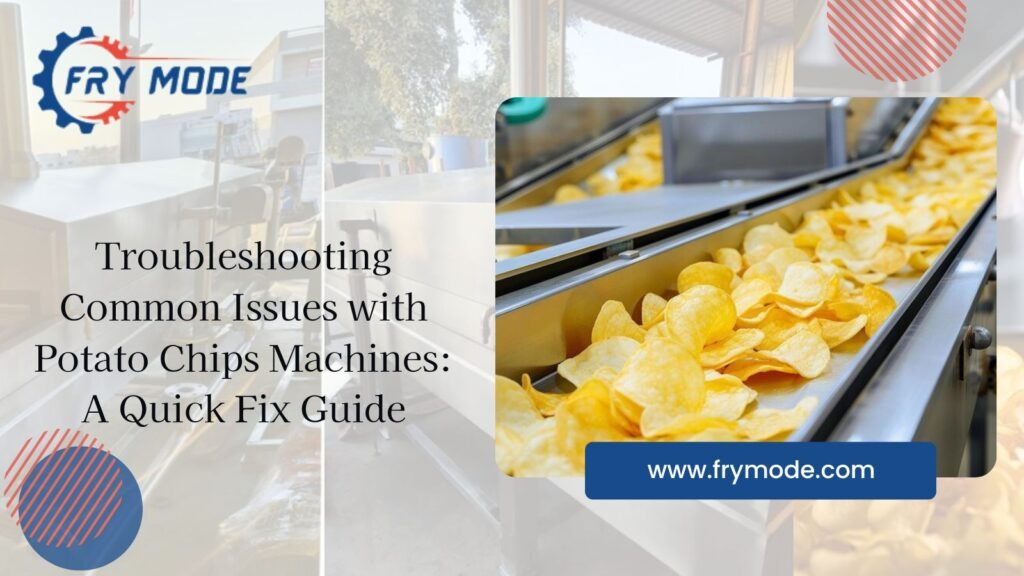Troubleshooting Common Issues with Potato Chips Machines: A Quick Fix Guide
Expert Tips for Efficient Repairs and Minimizing Downtime

1. Introduction
2. Common Issues and Quick Fixes
Below is a table summarizing typical problems along with practical quick fixes:
| Issue | Problem | Quick Fixes |
|---|---|---|
| Inconsistent Frying Temperatures | Chips may be unevenly cooked or excessively greasy if the frying temperature fluctuates. | – Check the thermostat and recalibrate if necessary. – Clean heating elements to remove oil buildup. – Inspect sensors for accuracy. |
| Uneven Chip Slicing | Inconsistent slice thickness leads to uneven frying and varied texture. | – Inspect blades for dullness or misalignment, sharpen or replace as needed. – Adjust slicing mechanism settings for uniformity. – Clean the mechanism to remove residue. |
| Excessive Oil Consumption | High oil usage increases costs and results in greasier chips. | – Review and clean or replace oil filters. – Optimize frying time with proper timer settings. – Maintain optimal oil temperature. |
| Abnormal Noises or Vibrations | Unexpected sounds or vibrations may indicate mechanical issues or loose components. | – Tighten any loose screws, bolts, or belts. – Lubricate moving parts to reduce friction. – Inspect motor and bearings for wear or damage. |
3. Detailed Troubleshooting Techniques
Let’s dive deeper into each common issue and how to address them effectively:
Inconsistent Frying Temperatures
- Problem:
Fluctuating temperatures can cause chips to be undercooked in some areas and overly greasy in others. - Solutions:
Start by checking the thermostat settings. Recalibrate the temperature control if needed. Clean the heating elements to remove any buildup that might be affecting the temperature. Also, inspect sensors to ensure they are free from grease and debris, which might lead to inaccurate readings.
Uneven Chip Slicing
- Problem:
Uneven slices result in chips with varying textures and doneness, which negatively impacts the overall quality. - Solutions:
Inspect the slicing blades for any signs of dullness or misalignment. Dull blades can cause uneven cuts, so sharp blades are essential. Adjust the slicing mechanism settings to ensure uniform thickness, and perform a thorough cleaning of the slicing unit to remove any residue that could hinder performance.
Excessive Oil Consumption
- Problem:
Using too much oil not only increases production costs but can also lead to greasier, less appealing chips. - Solutions:
Evaluate the oil filtration system. Regular cleaning or replacement of oil filters is necessary to maintain oil quality. Check the frying process timing to ensure chips are not fried longer than needed. Maintaining the optimal oil temperature is crucial, as overheating or underheating can cause chips to absorb more oil.
Abnormal Noises or Vibrations
- Problem:
Unusual sounds or vibrations may indicate mechanical issues such as loose components or worn-out parts. - Solutions:
Begin by tightening any loose screws, bolts, or belts within the machine. Apply appropriate lubricants to moving parts to reduce friction, which often causes noise. Finally, inspect the motor and bearings for any signs of wear or damage and replace them if necessary to restore smooth operation.
4. Step-by-Step Troubleshooting Process
A systematic approach to troubleshooting ensures that issues are resolved efficiently:
Observation and Documentation:
Monitor the machine closely and document any irregular performance or error messages. Noting specific symptoms can help pinpoint the root cause.Initial Inspection:
Conduct a visual and manual inspection of key components—blades, sensors, heating elements, and motors—to identify obvious issues such as wear or residue buildup.Component Testing:
Test individual components, using diagnostic tools if available, to determine whether they are functioning correctly. This might involve checking sensor outputs or motor performance.Apply Quick Fixes:
Use the quick fixes detailed above to address the identified issues. Adjust settings, clean components, or replace parts as needed.Test and Monitor:
Run a short production test after applying fixes to ensure the problem has been resolved. Monitor the machine closely to confirm that the fix remains effective over time.
5. Preventive Maintenance
Preventive maintenance is key to reducing the frequency of troubleshooting:
- Routine Cleaning:
Implement daily cleaning routines to remove oil and potato residues. - Scheduled Inspections:
Regularly inspect and calibrate the machine to catch issues before they escalate. - Training:
Ensure operators are trained to recognize early signs of trouble and perform basic troubleshooting. - Maintenance Logs:
Keep detailed records of maintenance and repairs to help predict future issues and optimize preventive measures.
Need Energy-Efficient Potato Chips Machine?
Enhance quality and consistency with Frymode’s Automatic Potato Chips Making Machine. Request a demo today!
